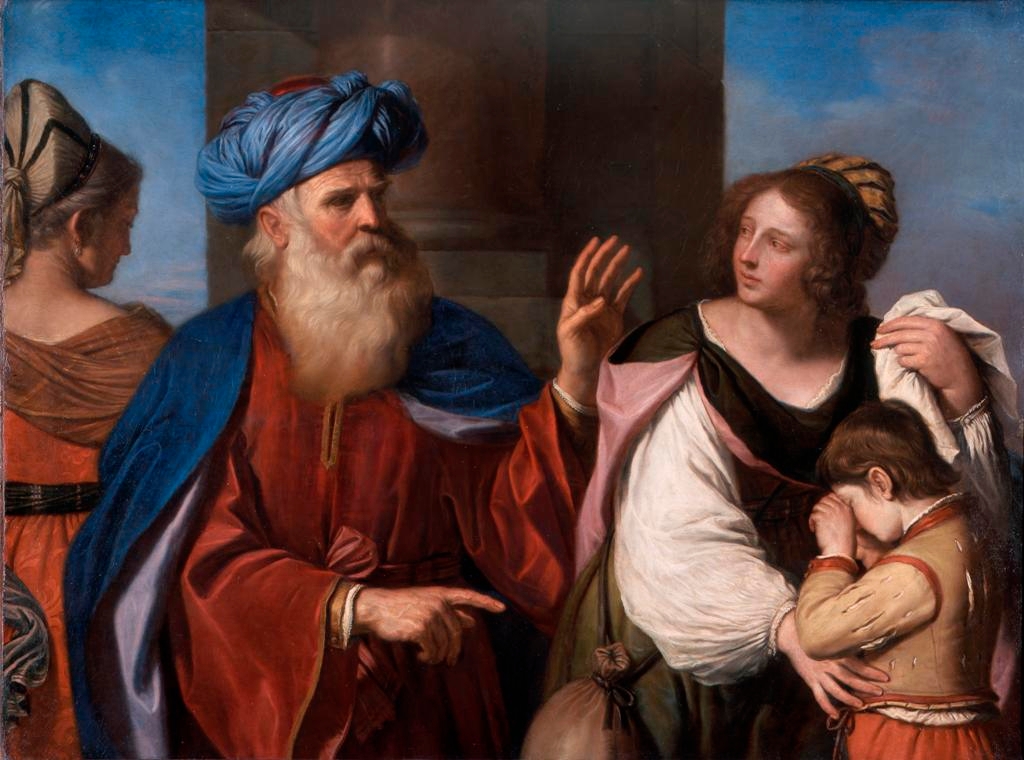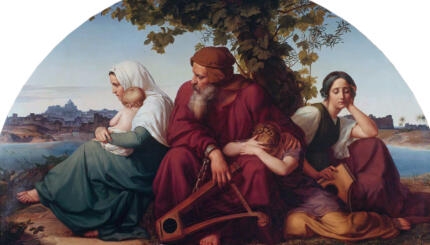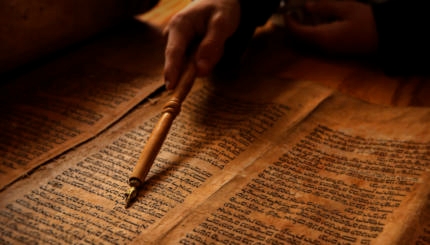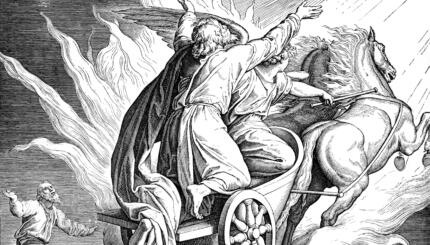Abraham’s name (in contrast to [the names] Isaac, Jacob, Israel, and Joseph) appears only as a personal name in the Bible, never a tribal or local designation. Thus it seems fairly certain that he was not an eponymous ancestor. He may have been a historical individual before he became a figure of tradition and legend.
If so, however, it seems impossible to determine the period in which he lived. “Abram” at least in the form “Abiram,” is a very common type of name, known in all periods. It is especially well attested to in the late Bronze Age (1550-1200 B.C.E.), though this may be no more than a coincidence. The variants “Abram” and “Abraham” arose in different languages and dialects.
Nor can we determine whether any of the biblical stories told about Abraham has a historical basis. The claim that Abraham came to Canaan from Mesopotamia is not historically implausible. Such a journey could have taken place in more than one historical period. As we have seen, however, the insistence that the Israelites were not Canaanites in origin was so persuasive that the belief that the first patriarch came from a foreign land could have arisen as part of an ethnic boundary-marking that characterized the development of the tradition.
Still, the connections between the family of Abraham and the city of Haran in northern Mesopotamia (Eski Harran or “Old Haran” in modern Turkey) are very precise in our earliest narrative source (J. or the Yahwist). Terah, Nahor and Serug–Abraham’s father, grandfather and great grandfather (Genesis 11:22-26)–seem to be the eponymous ancestors of towns in the basin of the Balikh River, near Haran.

Help us keep Jewish knowledge accessible to millions of people around the world.
Your donation to My Jewish Learning fuels endless journeys of Jewish discovery. With your help, My Jewish Learning can continue to provide nonstop opportunities for learning, connection and growth.
All three names appear in Assyrian texts from the first half of the first millennium B.C.E. as the name of towns or ruined towns in the regions of Haran, namely Til-(sha)-Turakhi (the ruin of Turakh), Ti-Nakhiri (the ruin of Nakhir) and Sarugi. Earlier, in the second millennium B.C.E., il-Nakhiri had been an important administrative center, called Nakhuru. The patriarchal connection with this region may be rooted in historical memories of Amorite culture of the second millennium B.C.E.
Abraham is represented as the founder of religious sites in the regions of Shechem (Genesis 12:7), Bethel /Ai (Genesis 12:8, cf. 13:4), Hebron (Genesis 13:18), Mount Moriah (Genesis 22:2) and Beersheba (Genesis 21:33). As [historian] Benjamin Mazar has noted, all these sites lie within the boundaries of early Israelite settlement in Iron Age I (1200-1000 B.C.E.) These stories present Abraham as the founder of major cultic sites both in Manasseh-Ephraim and in Judah, the dominant tribes of the north and south. Here we see Abraham functioning as the founder of a common social and religious identity, uniting northern and southern tribes.
The earliest reference to Abraham may be the name of a town in the Negev listed in a victory inscription of Pharaoh Shishak I (biblical Sheshonk). The campaign occurred in about 925 B.C.E. during the reign of Rehoboam (1 Kings 14:25-26; 2 Chronicles 12:2-12). A place name in the Negev section of the inscription is pa’ha-q-ru-a ‘i-bi-ra-ma, which is best read “the fortification of Abram,” or, more simply, “Fort Abram.”
The location and chronological context of this site make it plausible that the Abram after whom the site was named was the Abram of biblical tradition. Although we cannot be certain of this identification, the place name probably indicates the presence and importance of the Abram/Abraham tradition in the tenth century B.C.E.
Reprinted with permission from Ancient Israel: From Abraham to the Roman Destruction of the Temple, edited by Hershel Shanks (Biblical Archaeology Society).



